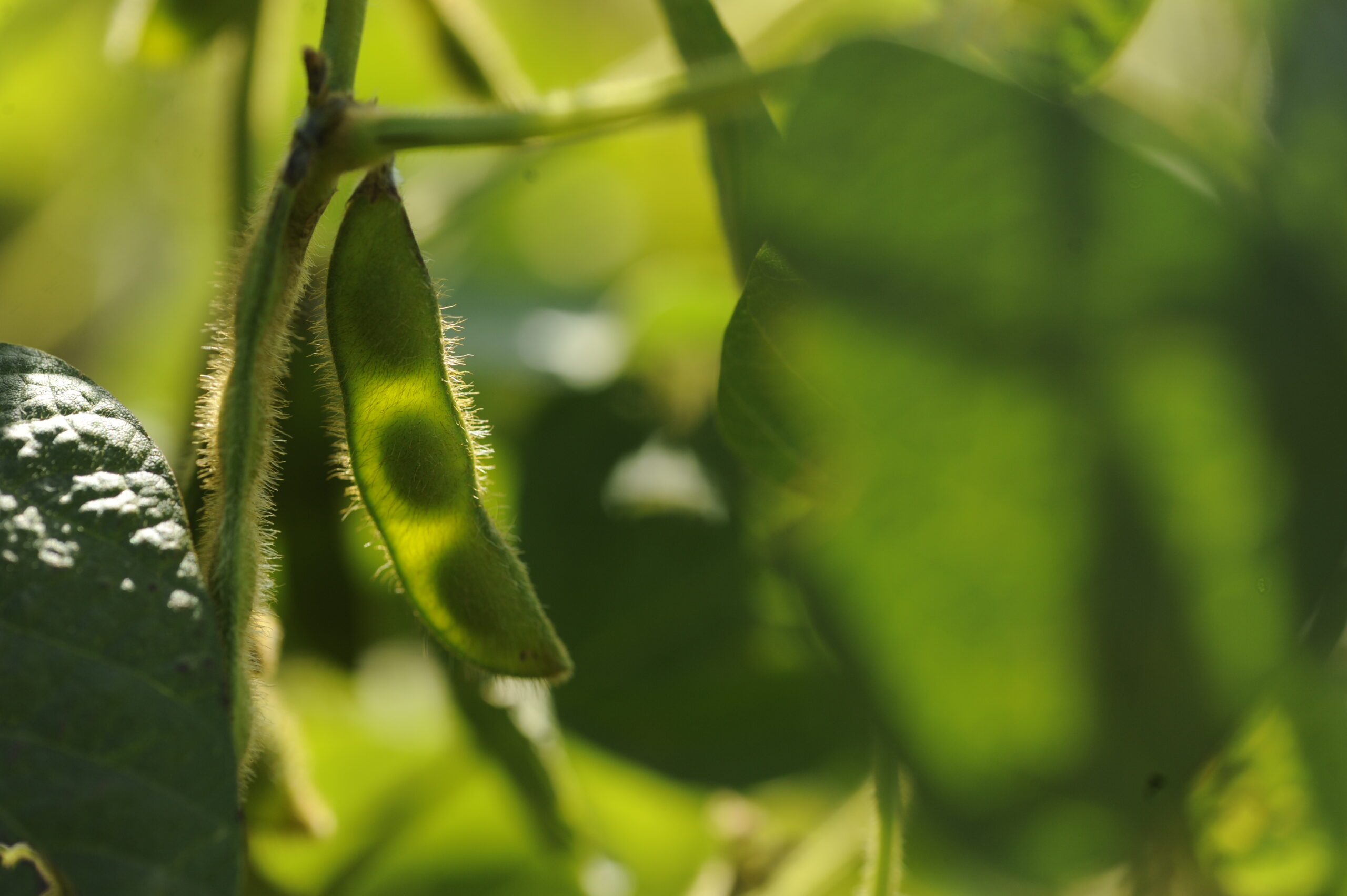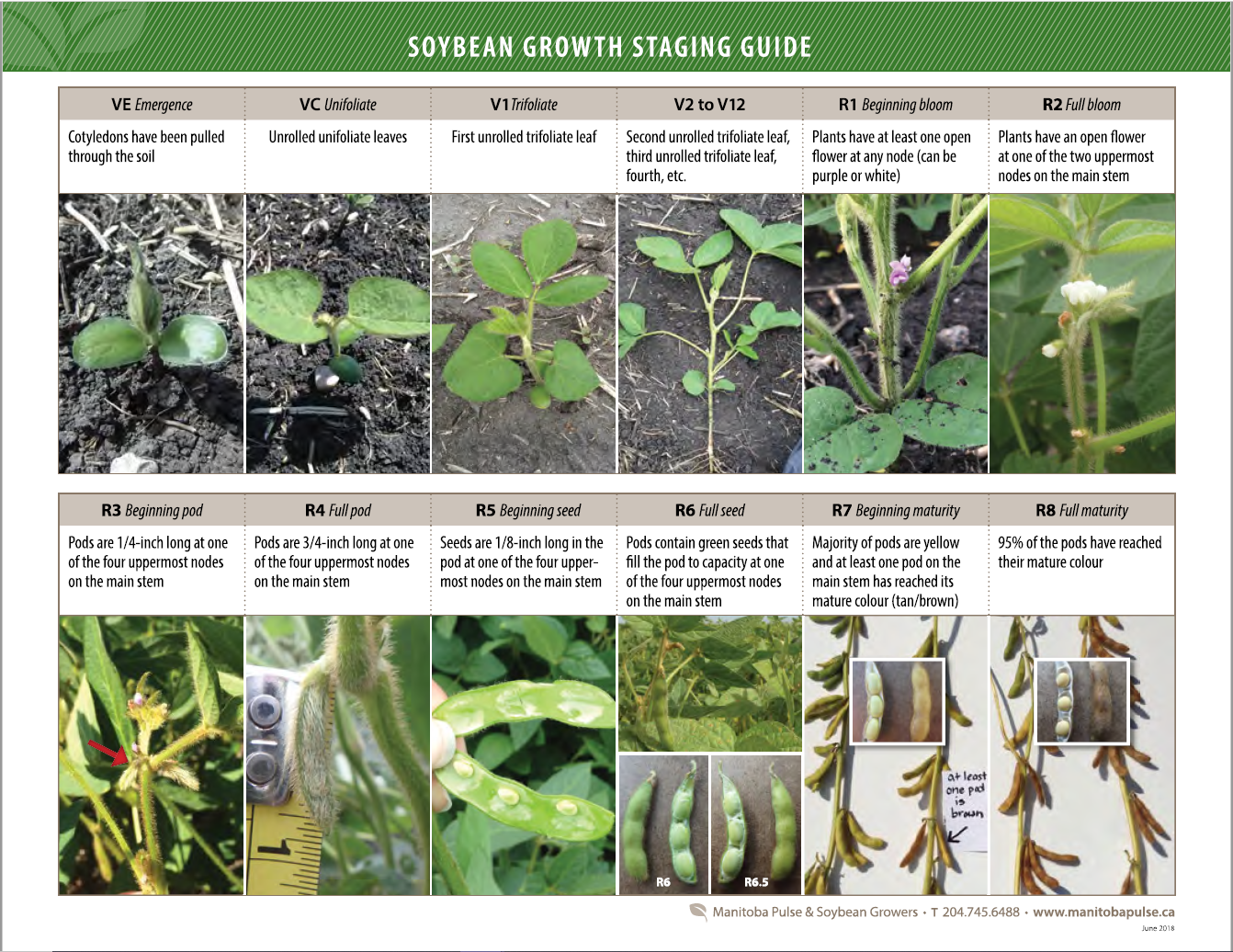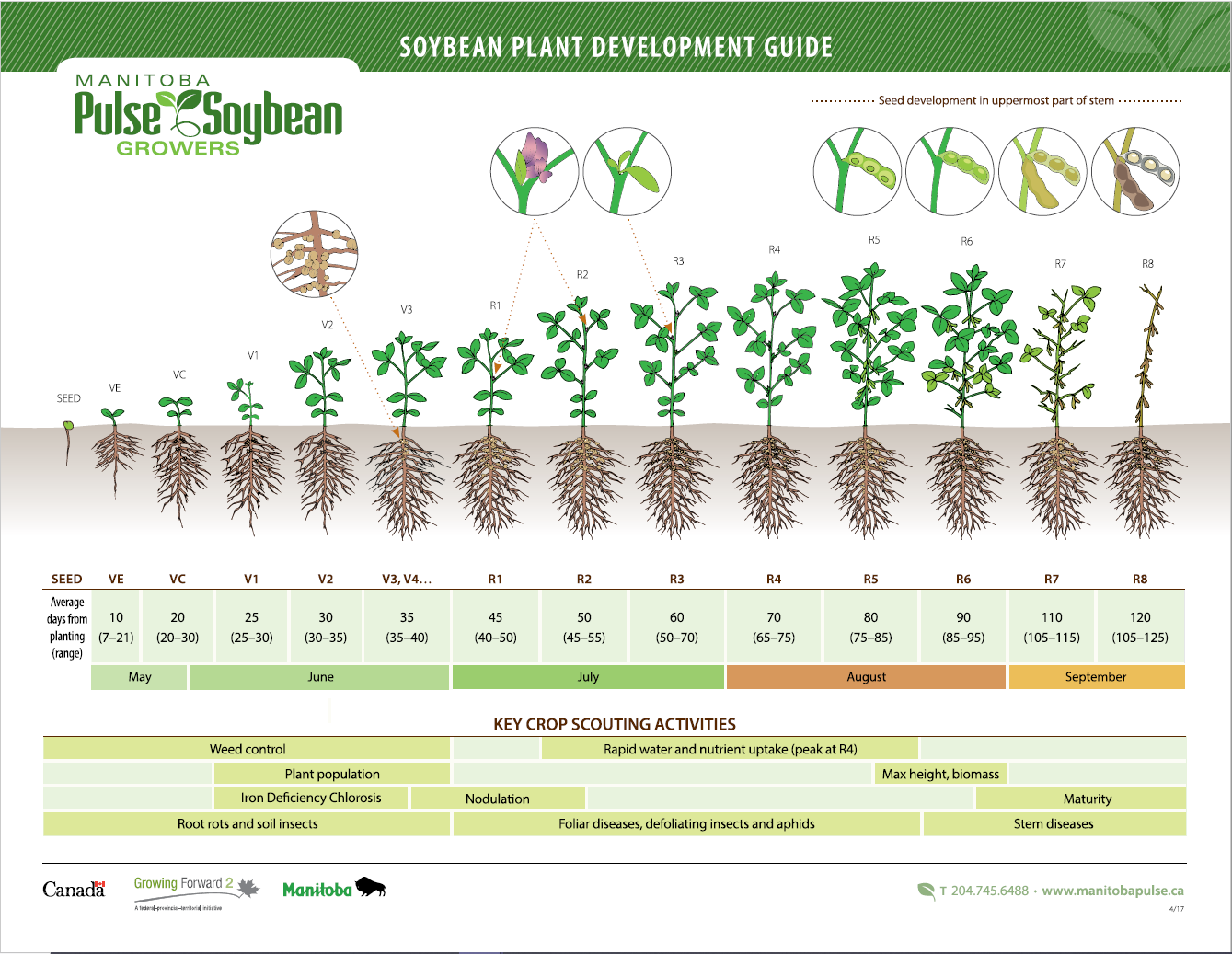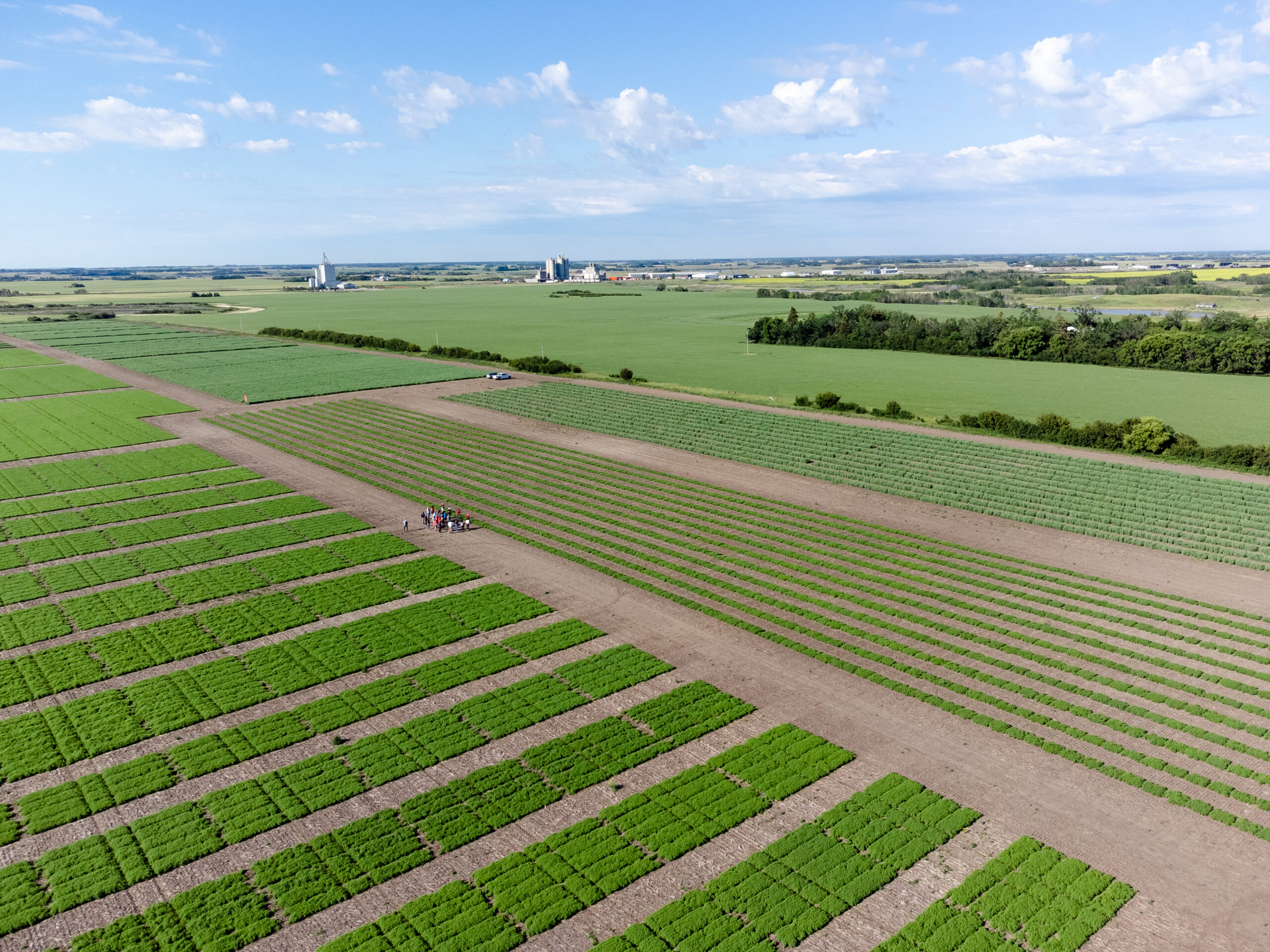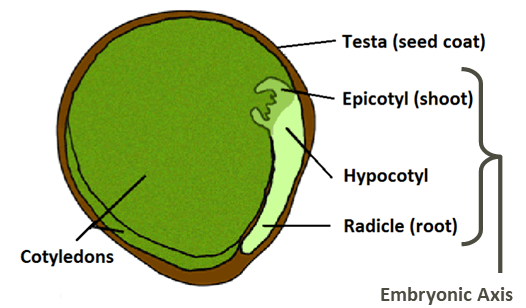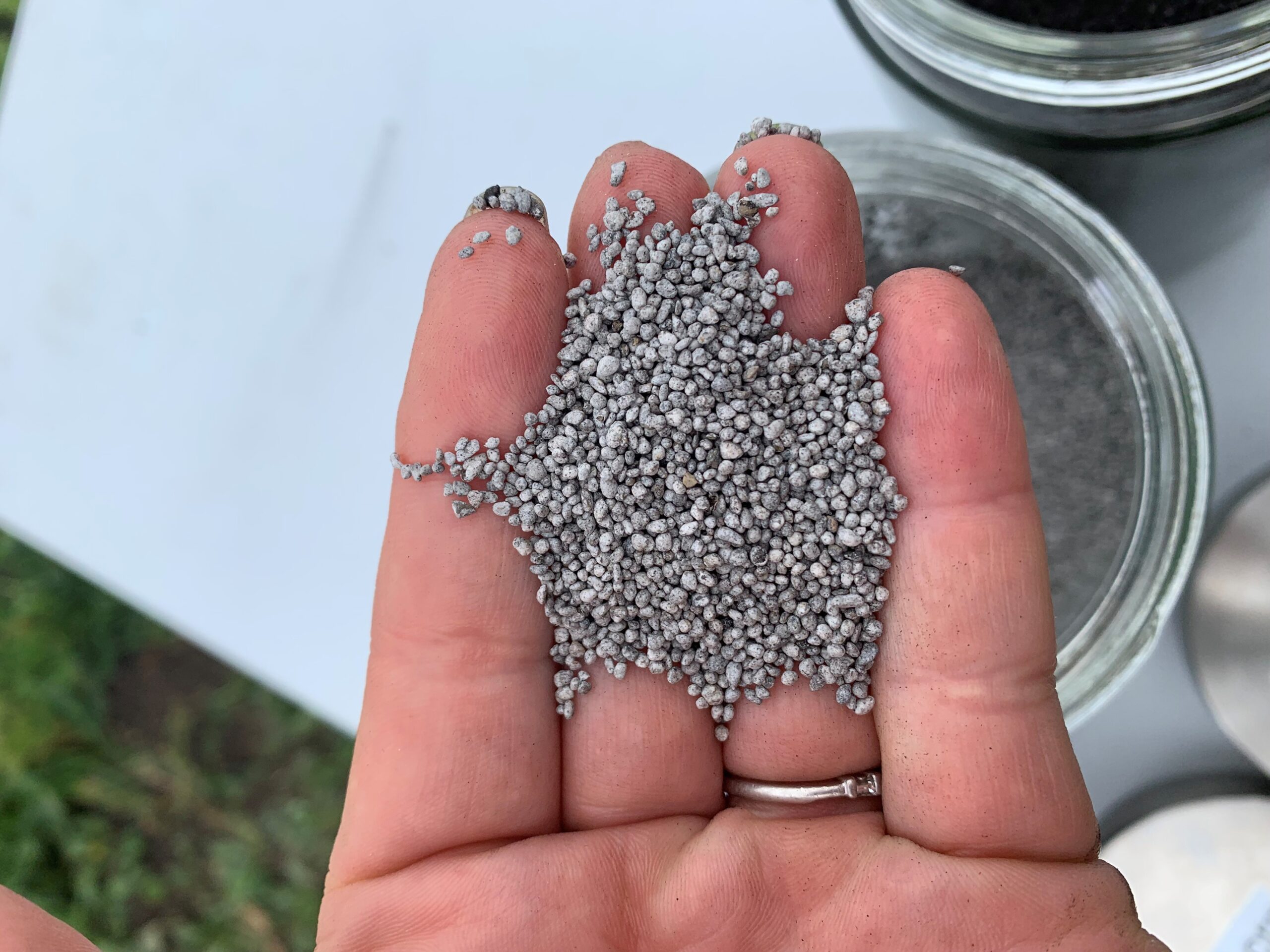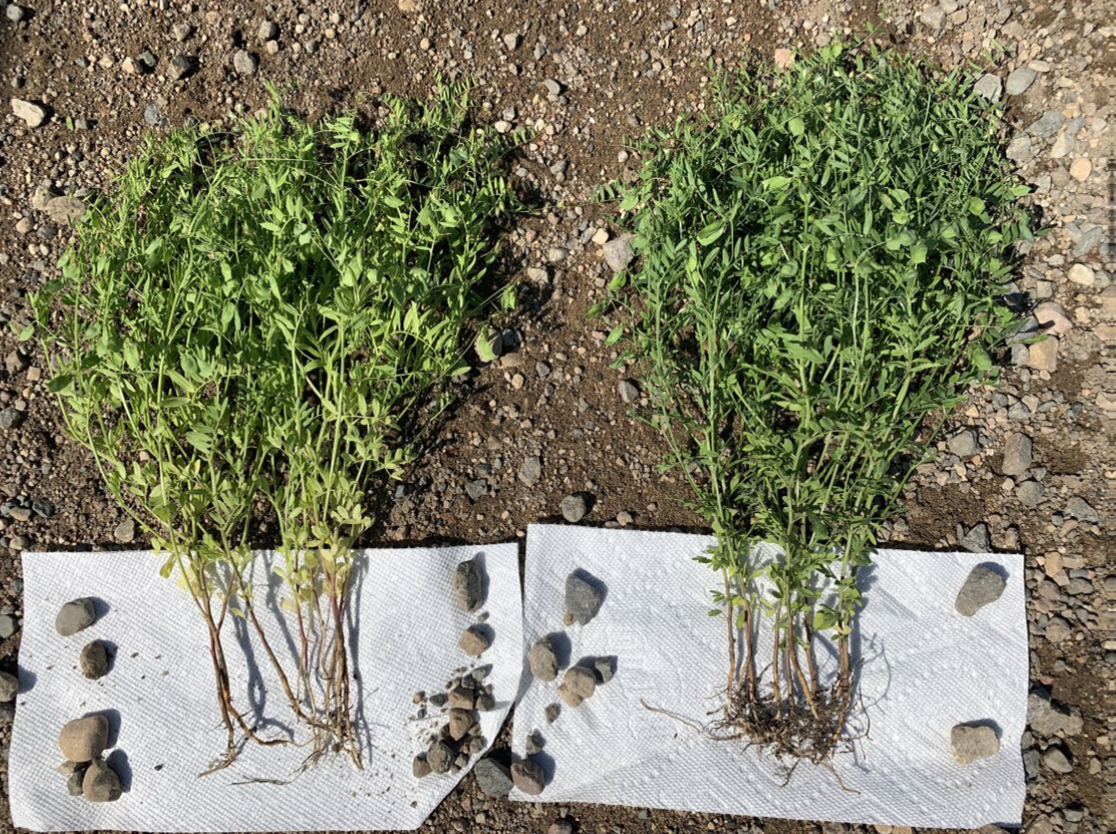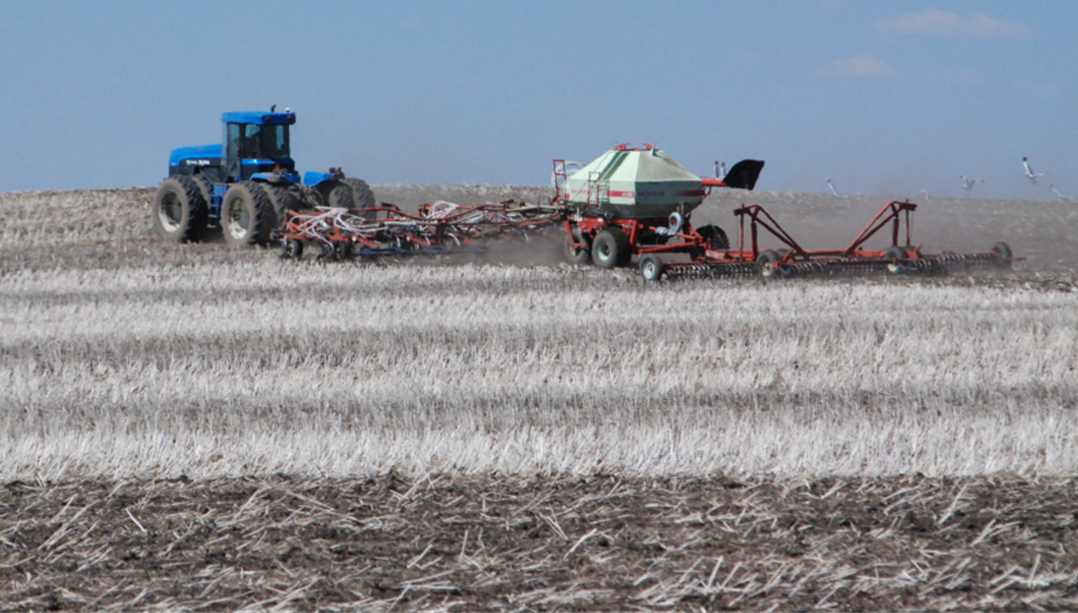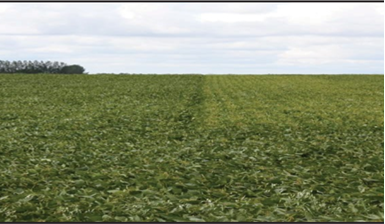Description & Adaptation
Soybeans were domesticated in Northeastern China in about 2,500 B.C. and are a member of the legume family. The cultivated soybean, Glycine max L., is a domesticated soybean grown in many parts of the world. It is a member of the subgenus, Soja. Worldwide soybeans are an important oilseed crop, used to produce oil for human consumption and a high protein meal used in animal diets. While traditionally soybeans have been grown in warm-season zones, breeding efforts have resulted in soybean varieties that are adapted to more northern climates, and the production area is increasing every year, including in Saskatchewan. Soybeans are still a warm-season crop, requiring sufficient heat and moisture to perform well. Moisture and heat are the two biggest factors impacting soybean production in Saskatchewan.
Soybeans are a legume plant with a branched tap root and are sensitive to day length in their growth and reproduction. As days begin to shorten, flowering is initiated in the crop. Growth stages are still heavily influenced by heat, and increased mean temperatures will hasten flowering. Reduced mean temperatures will delay flowering, in relationship to photoperiod length.
Soybean growth stages are normally divided into vegetative (V) and reproductive (R) stages.
Soybeans exhibit epigeal germination so during the vegetative stage the cotyledons and growing points push up through the ground and are the first above-ground structures. The size of the cotyledons on the soybean plant are quite large, so crusted hard soils can impede emergence. Higher seeding rates can help with the plants pushing together in a row, to push through crusted topsoil.
The first true leaves of the soybean plant are unifoliate and opposite off the stem on short petioles (known as the VC stage). All other true leaves following are trifoliate on long petioles and alternating from side to side up the stem. The number of trifoliate leaves that a soybean will have will fluctuate with variety and environmental conditions. New vegetative stages appear about every five days from VC through V5, and every three days from V5 to shortly after R5, when the maximum number of nodes is developed. It will take the plant approximately four to five weeks to form all nodes.
As soybeans are legumes, when they are inoculated with Bradyrhizobium japonicum bacteria, nodules will form on the roots to fix some of the nitrogen required for the crop. Active nitrogen fixation does not begin until the V2 to V3 stages, although developing nodules may be observed as early as the emergence stage. The Bradyrhizobium japonicum bacteria is not found naturally in Saskatchewan soils, so inoculation is very important.
Once the crop begins to develop buds, it enters the reproductive stages. Vegetative growth and nodal production will continue through some of the reproductive stages. Soybeans enter the R1 stage during the V7 to V10 stage. In each axil an axillary bud is present. Depending upon environmental conditions the bud may become a branch or a flower or fail to develop. Flowers are purple or white and self-pollinated. The appearance of new flowers peaks midway between R2 and R3 stages and is nearly complete by R5. This period usually begins six to eight weeks after seedling emergence, but may occur earlier if planted late, due to photosensitivity. Warm temperatures accelerate development, especially flowering. The flowering may occur earlier with warm temperatures, but maturity may not necessarily be earlier because of day length controls. Generally, yield increases as the length of the flowering-to-maturity stage increases.
Pods begin to develop at the R3 stage, and it is not uncommon to find developing pods, withering flowers, open flowers, and flower buds all present at the same time. The lower nodes will develop pods first, as flowering begins there and moves up the plant. Pods continue to develop throughout the R4 stage, which is the beginning of the most crucial period of plant development in terms of seed yield. Any stress (moisture, light, nutrient deficiencies, frost, defoliation, etc.) between R4 and R6 will reduce yields more than at any other time. This is because at the R5 stage flowering is complete, so new flowers will no longer develop to compensate for loss, and young pods and seeds are more prone to abort than older pods and seeds. During this time, plants also achieve their peak height and leaf area. Nitrogen fixation rates also peak during this time.
Maturity begins after the full seed stage at R6. The leaves begin to turn yellow and continue to mature and fall off, moving into R7 and R8. Soybeans are physiologically mature by the R7 stage, even with a few pods still looking green. Yield reductions due to stress at this stage and beyond have little to no effect on yield.
Ideally, soybeans are best suited to loamy soils, but may also perform well on clay soils if conditions are favourable for rapid seedling emergence. When emerging, soybeans have a large cotyledon pushing through the soil surface, so crusted, heavier soils can make emergence difficult. Soybeans are sensitive to drought, so sandy soils may not have enough late-season moisture for good yields.
Production has moved northward and west in Saskatchewan, as shorter season varieties requiring fewer days to reach maturity are being released. The southwestern area of the province, while having heat, may be too dry to meet the moisture requirements of the crop.
Soybeans require between 450 and 750 millimetres (mm) of moisture per season, depending on the climate and length of the growing period. They require a large portion of this during the critical flowering and pod-fill period, during late July and August. If drought conditions occur during the critical period, yields may be reduced.
Since soybeans are photosensitive and latitude greatly affects day length, varieties are bred for specific north-south ranges of adaptation, typically in a range of 150 to 250 kilometres (km). Growing a variety south of its maturity band may result in earlier maturity and reduced yield, likewise, growing a variety north of its maturity band may delay maturity and it will be at a great risk of not reaching full maturity prior to frost.
Related Resources
Varieties
Soybean growers in Saskatchewan are faced with expanding options of soybean varieties to choose from. Soybean variety selection is one of the most important factors in obtaining a high yielding crop and in reducing the risk of environmental loss of yield because of the growing season. Soybean varieties may have strengths that make them more suitable for some environments and less suitable for others. In Saskatchewan, soybean maturity is one of the most important factors to consider when selecting the right variety. Additional factors to consider include yield potential as well as disease resistance.
If risk of frost is a concern, select an earlier maturing variety. Soybeans are scored based on maturity groups. Soybeans are assigned to these maturity groups based on the relative maturity of comparative varieties. Based on the maturity group rating scale, different companies may have slightly different maturity group ratings from others for soybeans of similar maturity. It is important for growers to understand what varieties have performed well in their area, and how the maturity of those varieties compares to other varieties in the marketplace.
Maturity is affected by growing conditions. Maturity group values assigned to a variety represent a guide based on average conditions, providing a relative comparison for crops and varieties that are grown under similar conditions and planted at the same time. If maturity is delayed into the fall, differences in maturity can be heightened, as the days are shorter, and temperatures are cooler. Under warm, dry years, maturity may be shortened and under cool, wet years, longer days-to-maturity could be expected.
Understanding Soybean Maturity Ratings
The maturity group (MG) rating system classifies soybean varieties from MG 000 in northern areas to MG IX in southern areas of North America, based on latitude ranges and photoperiod (daylight) sensitivity. Each MG region covers one or two degrees of latitude, or about 200 to 300 kilometres from north to south. For Saskatchewan, soybeans are most suited with 00 and 000 MG. Each MG can have subgroupings with a 1 to 9 decimal number following the group number. These decimal places equate to slight increases in maturity. In the 00 maturity ratings, a subgroup of 00.1 would be earlier maturing than 00.9. These MG ratings are assigned by the respective company based on comparison to current commercial varieties and as a result, not all MG ratings are entirely standardized between seed companies.
Want to see how different varieties compare?
Visit the Interactive SaskSeed Guide for information on all soybean varieties available to Saskatchewan producers.
Related Resources
Seeding
Seeding Equipment
Soybeans can be seeded using conventional air drills and air seeders found on most farms. They can also be seeded as row crop with planters on row spacings ranging from 15 to 30 inches (in). Research in Manitoba and North Dakota has found that narrow-row spacings typically yield the same or higher than wide-row spacings in Saskatchewan.
Narrow rows will require a slightly higher seeding rate compared to a planter, to compensate for less concentrated rows and potential seed damage, especially when seed is less than 12% moisture. However, narrower rows will achieve canopy closure more quickly, helping with weed competition and moisture conservation.
Planting Date
Soybeans are very sensitive to cold water uptake immediately after planting. Planting date is determined to a large degree by soil temperature. Ideal soil temperatures will be at least 10°C at seeding depth. Seeding below these temperatures may delay emergence and may result in reduced stand establishment. The first water that the soybean absorbs in the hours after it is seeded is important to be warm to avoid seed chilling. Seeding fields later in the morning, when soils have warmed up a bit more from overnight and will continue to warm throughout the day, and avoiding seeding if a large rain is forecast, will help reduce the uptake of cold water. Seeding as early as soil temperatures permit is important as later seeding dates can result in decreased plant height and lower pod establishment, making harvest difficult. Later seeding also increases the susceptibility to fall frost and reduces seed yield potential. May 10 to the 25 is a typical seeding window for soybeans. Research is currently being done to evaluate ideal seeding dates across the Prairies.
Once soybeans emerge, they can tolerate light frosts of up to -2°C for short periods, if the growing points are not damaged.
Seeding Rate
Soybean seeding rates should be determined by targeting desired final plant stands. Using this method, you need to consider the desired plant population, the variety seed size (thousand kernel weight), and the percentage seed survival. Soybean seeding rates are usually given in seeds per acre (plants/ac).
The ideal final plant population ranges from 150,000 to 200,000 plants/ac (four to five plants per square foot). Average seed survivability of around 75% is usually achieved when using a drill. A planter is typically able to achieve a higher seed survivability rate. Overall, seed survivability will depend on equipment, seed quality, and seedbed conditions. This means seeding rates will range from 70 to 140 pounds per acre (lb/ac), depending on the various factors. Exceeding ideal plant stands can result in drought stress during dry years, and lodging in wet years. Soybeans can branch to help compensate for lower plant stands but plant height and pod height are usually lower with a less dense stand, creating more issues with harvestability.
To determine the ideal seeding rate the following formula can be used:

To convert seed per acre to lb/ac, divide the target plant population by the number of seeds per pound on the seed tag (ex. 209,150/2,600 seeds per pound = 80 lb/ac.
Seeding Depth
Soybeans are a relatively large seed and require adequate moisture to hydrate and germinate. They need to be able to remain in contact with moist soil. Ideal seeding depths range from 0.75 to 1.5 in (1.9 to 3.81 centimetres). Deep-seeding can reduce emergence and increase the risk of disease infection from soil-borne pathogens.
Rolling Soybeans
Soybeans are harvested very low to the ground, so rolling should be done if possible. Soybeans are sensitive to rolling once they have begun to break the soil surface. Soil compaction at this time can break off fragile emerging soybeans which kills them, so it is important to get out and roll the field within a few days of seeding. If you miss the window prior to emergence, wait until soybeans are at the first trifoliate stage and it is a warm, sunny day, so plants are wilted and less likely to break. It is much better to roll when they have not emerged.
Care should also be taken to avoid rolling when the soil is wet. Compaction and soil crusting can inhibit seedling emergence, especially in heavier textured clay soils.
Seed Treatments
Soybeans are susceptible to several early-season seed and seedling diseases, and some soil insects. Fungicide and insecticide seed treatments are available and should be assessed on a field-by-field basis.
Related Resources
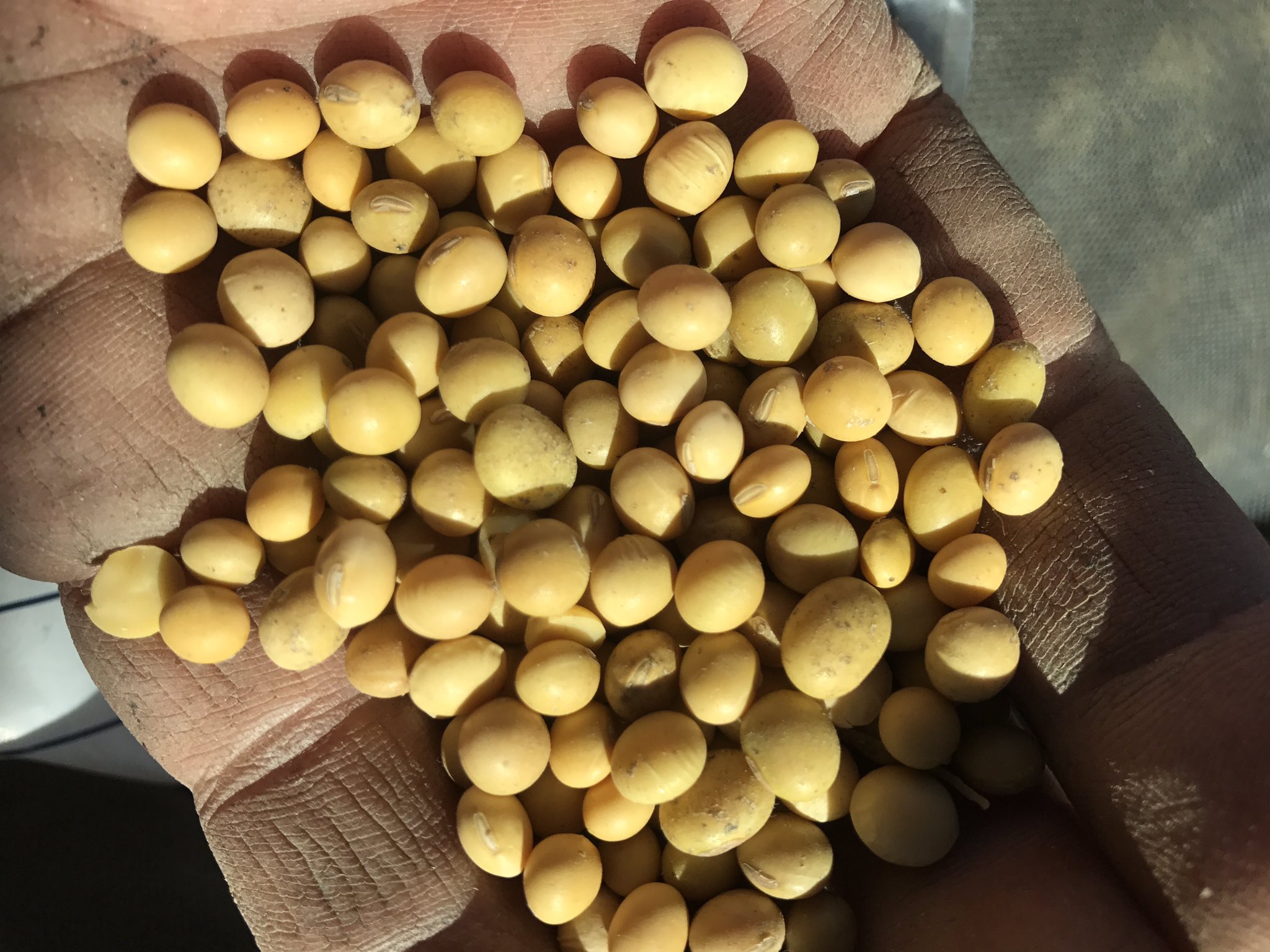
Soybean Seed Treatment Options
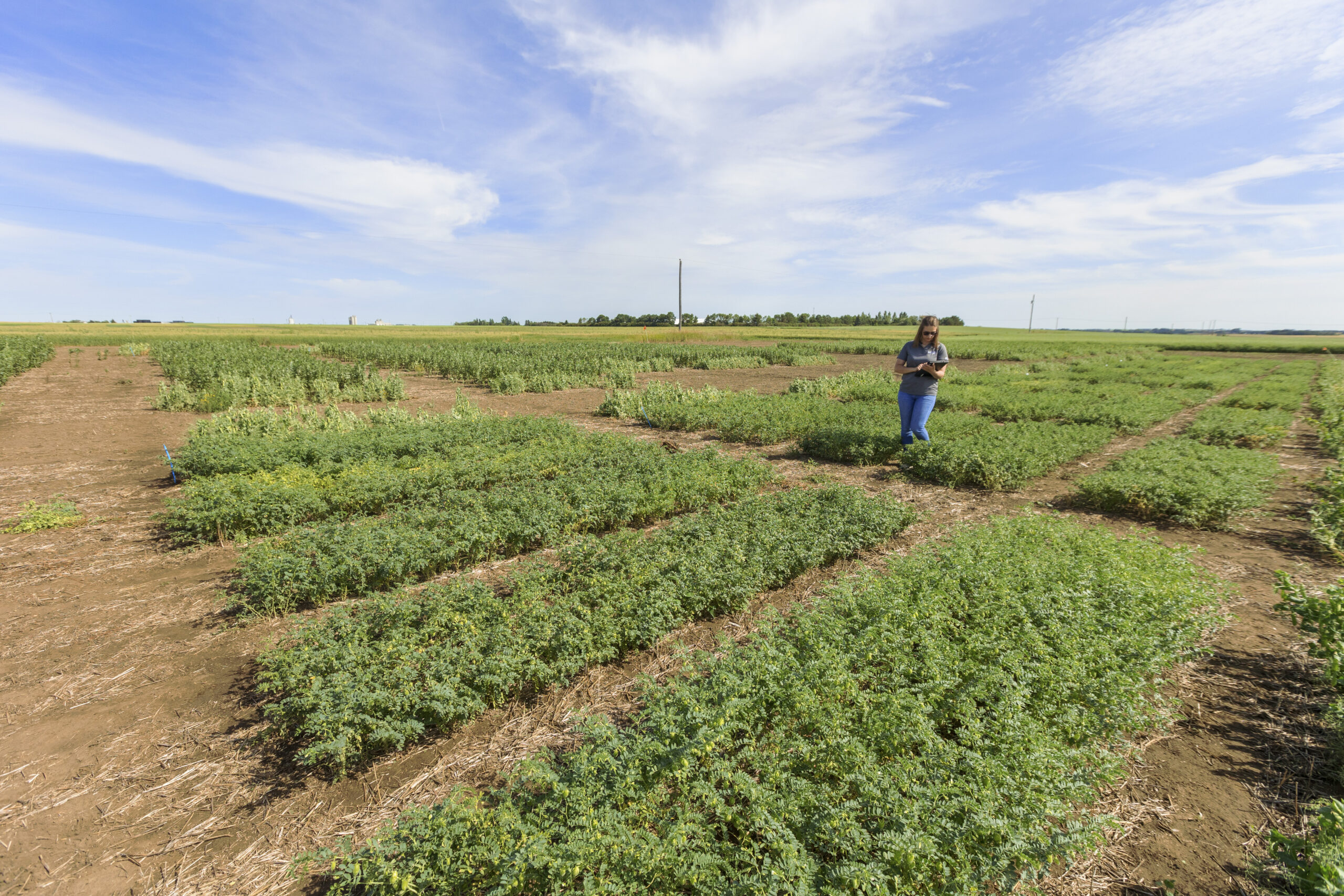
Chickpea Health Issue Update: What 6 Years of Research Reveals About Causes and Management
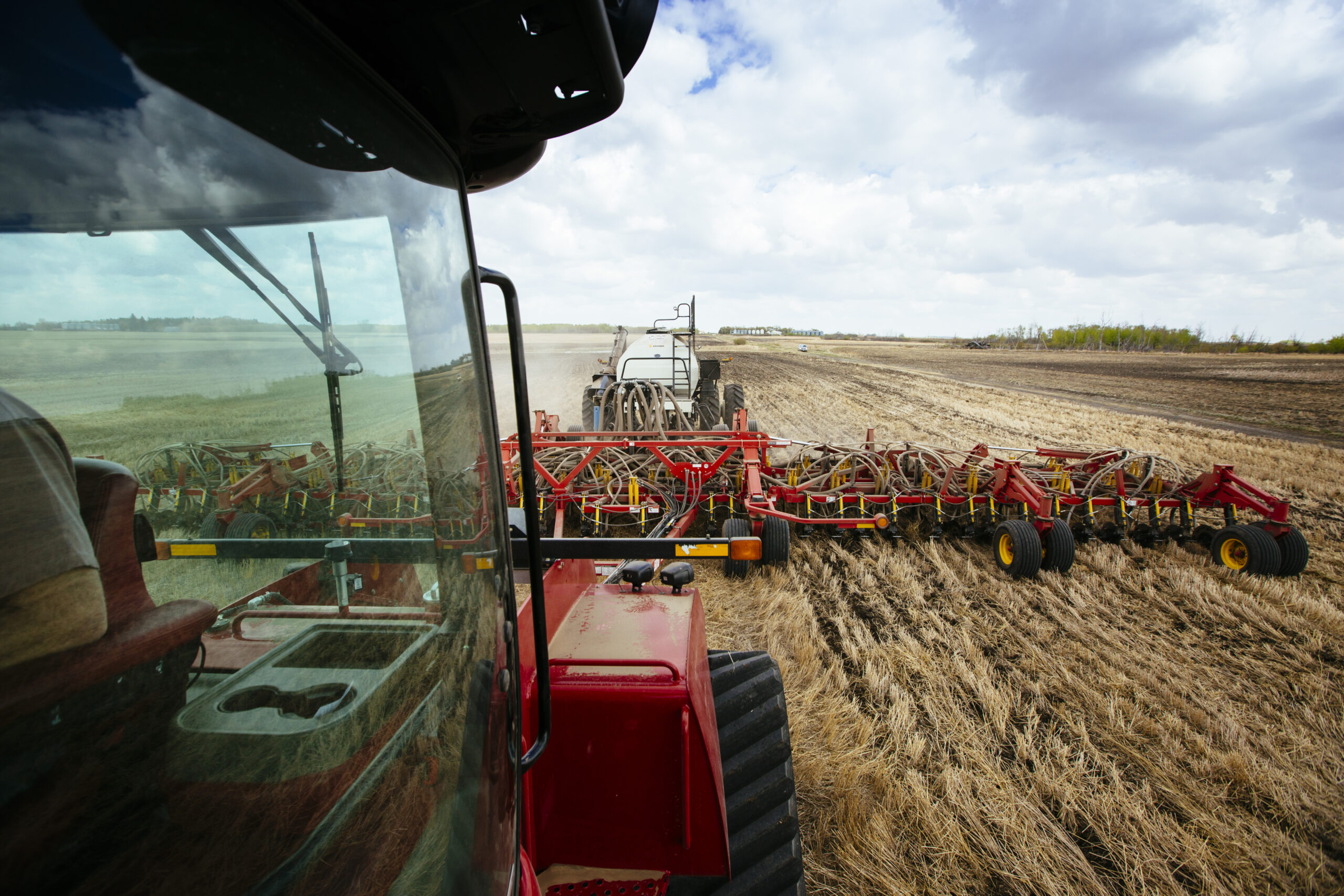
Calculating Seeding Rates
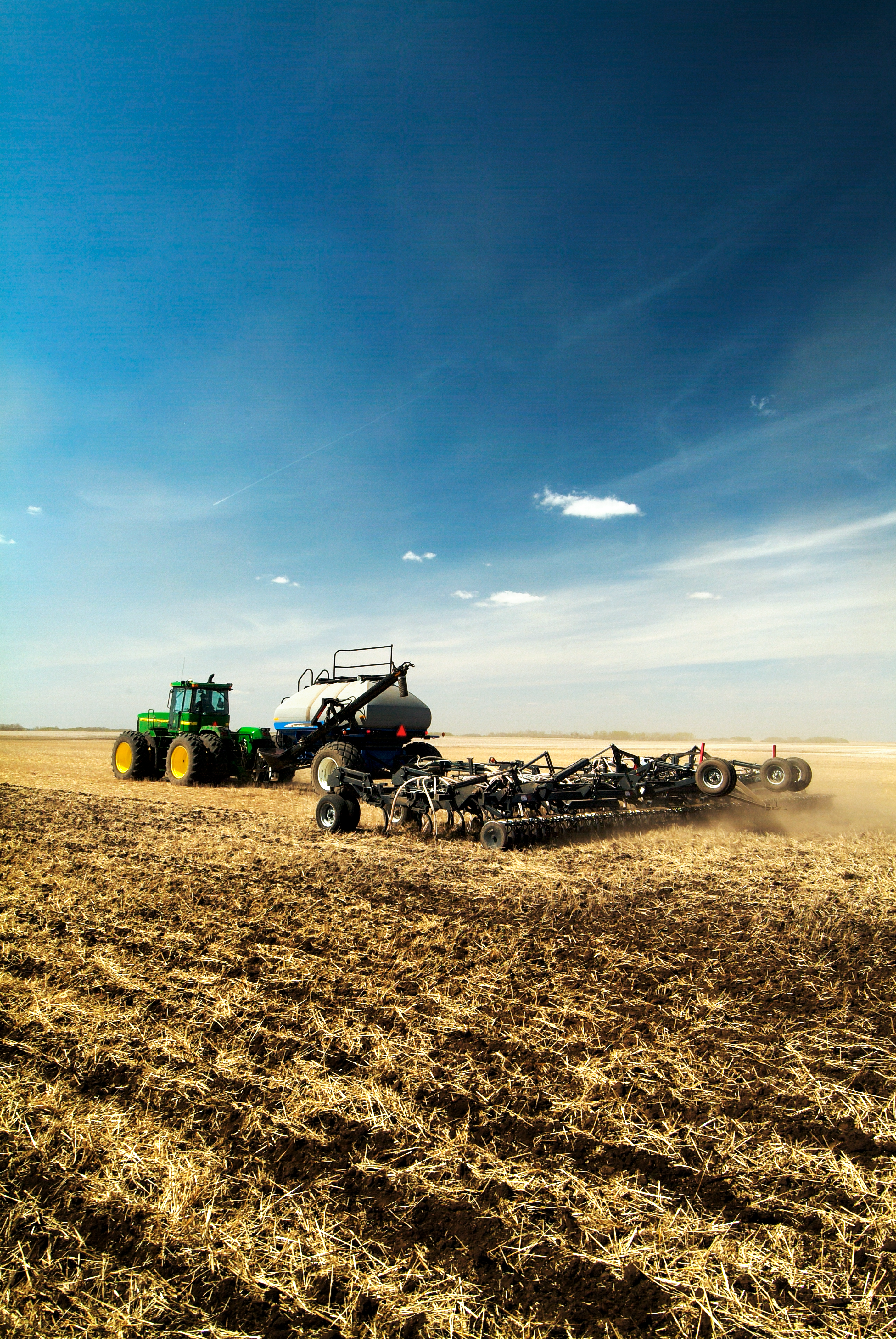
Seeding Tips For Pulse Crops
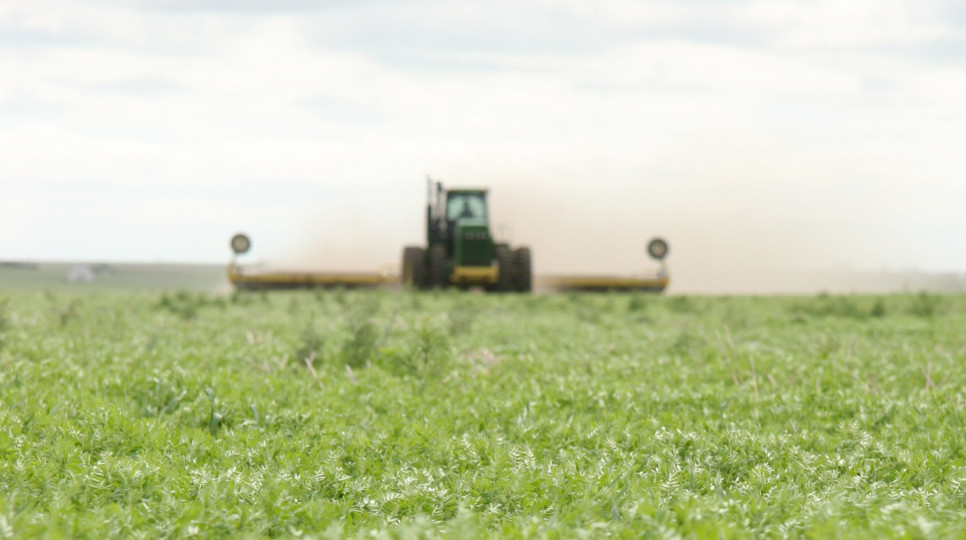
Tips for Rolling Your Pulse and Soybean Crops
Inoculation & Fertility
Soybeans are a legume crop and can fix 50–60% or more of their required nitrogen. While they need more nitrogen to maximize yield than what is provided by fixation, it is not practical to apply additional nitrogen as fertilizer, as it can be antagonistic in the development of the fixation relationship and seldom results in increased yields. The bacteria Bradyrhizobia japonicum is not native in Saskatchewan soils and it is critical that soybeans be inoculated. Inoculants are available in liquid, powder, and granular form.
In fields where soybeans do not have a history of being grown, double inoculation is recommended. Usually, double inoculation is in the form of a seed-applied liquid plus an in-furrow granular inoculant. Check with your seed supplier as some companies supply seed with a liquid inoculant already on the seed so then only a granular inoculant is required at seeding. If using seed treatments, the compatibility of seed treatments and inoculants should be confirmed, especially if applying liquid inoculants on seed.
Nodules take some time to form with some nodules and nitrogen fixation starting around the vegetative (V) 2 to V3 stages. The number of nodules formed and the amount of nitrogen fixed increases with time until midway between reproductive (R) 5 and R6. Nodulation should be assessed at R1 or earlier, and you should find healthy nodules on each plant. Nodules are only active and fixing nitrogen if pink when sliced in half. If there are no nodules present and the crop looks yellowish green, a rescue application of nitrogen should be considered at R2 (full flower) to R3 (early pod). Rescue treatments can be broadcast granular or liquid nitrogen and can be used if nitrogen is directed below the canopy to the soil surface and rainfall is imminent.
Soybeans are very effective at extracting phosphorous from the soil, so they can be grown on fields with various phosphorus levels. On higher level phosphorus soils there is often no response to added phosphorus fertilizer. However, soybeans will remove approximately 0.85 lb of phosphorus pentoxide (P205) per bushel in the harvested seed, and crop rotations should be planned to maintain soil phosphorus levels in the range of 10 to 20 parts per million (ppm). If applying phosphorus with the seed, the maximum seed safe application rate of P205 is 10 lb/ac for wider rows, or up to 20 lb/ac for narrower rows with good soil moisture based on 15% seedbed utilization.
Uptake and removal of potassium by soybeans is higher than many other annual crops. Ideally soybeans would be grown on soils with medium to high potassium levels above 200 lb/ac. They will remove 1.4 lb of potassium oxide (K20) per bushel, and soil levels should be monitored to ensure depletion does not occur. If soil test levels are below 200 lb/ac (or 100 ppm), potassium fertilizer should be applied. Due to the toxicity if placed near the seed, it should be applied away from the seed.
Sulfur is another important nutrient for soybeans. Soils with medium to high levels of sulfur availability are ideal (greater than 30 lb/ac). Generally, if sulfur is being used in rotation on a field with other crops (like canola), there is enough for soybeans, and it should not need to be added. If grown on coarse-textured soils with lower organic matter, a sulfur application may benefit. Removal of sulfur in the seed is 0.2 pounds per bushel (lb/bu).
While most Prairie soils contain adequate amounts of iron to meet the demands of growing soybeans, some environmental conditions can reduce the availability and uptake of iron. If inadequate uptake of iron occurs in soybeans a condition known as Iron Deficiency Chlorosis (IDC) occurs. Soil properties, environmental conditions, and variety susceptibility all affect the potential and severity of IDC.
Excess moisture, salinity, carbonates, and/or high nitrate levels in the soil will reduce the ability of the soybean to access iron. Higher potential hydrogen (pH) calcareous soils (pH greater than 7.4) and saline soils are at higher risk.
If IDC is a result of saturated soils, it is often a temporary condition that resolves as soils dry up. If symptoms persist for longer than one week, yield loss can occur. There are no in-season management options, but accurate diagnosis can help adjust management in future years. If fields planned to have soybeans are at risk of IDC, choosing a variety that has a good (low) IDC rating is very important. Varietal reactions to IDC (ratings 1 to 5) are available on the soybean varieties. Other management practices can include improved drainage, heavier seeding rates, and practices that reduce soil nitrogen levels. Iron chelate products applied in-furrow can reduce IDC, but susceptible varieties may still result in yield loss.
Soybeans exhibiting visual signs of IDC have yellowing of the new leaves between the veins and an overall yellowing of the field, especially during the early vegetative stages in June.
